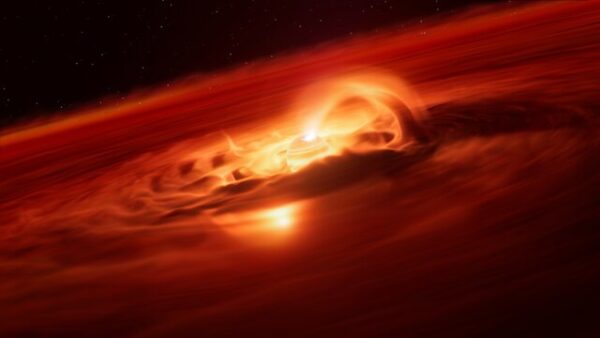
Astronomers have captured an extraordinary sight: a lone planet adrift in the galaxy, feeding on its surroundings at a rate that defies precedent. The object—catalogued as Cha 1107-7626—lies some 620 light-years away, yet its activity has sent ripples through the astrophysics community, according to The Astrophysical Journal. Researchers calculate it is piling on mass at an astonishing six billion tonnes per second, the fastest growth ever measured for a planetary-scale body.
This is no ordinary world, writes IFL Science. Rogue planets like Cha 1107-7626 wander the galaxy unmoored from stars, cold and solitary. With a heft of five to ten Jupiters—short of the 13 needed to qualify as a brown dwarf—it occupies a murky borderland between planet and failed star. But what stunned scientists was not its size, but its sudden flare-ups. Using the European Southern Observatory’s Very Large Telescope and the James Webb Space Telescope, an international team led by the University of St Andrews observed dramatic outbursts this year, when the planet’s brightness surged by nearly two magnitudes. Those spikes corresponded to an eightfold leap in accretion, rivaling the violent EXor-type eruptions usually seen in young stars like EX Lupi.
Such behavior, rare enough among stars, is unprecedented for a planet. Archival records suggest this is no one-off—Cha 1107-7626 appears prone to repeated feeding frenzies. “The origin of rogue planets remains an open question,” said Professor Aleks Scholz of St Andrews. “Are they the lowest-mass objects formed like stars, or giant planets ejected from their birth systems?” The new evidence only deepens the mystery, blurring the categories astronomers use to make sense of the cosmos.
For co-author Dr. Belinda Damian, the significance is clear: “This discovery blurs the line between stars and planets and gives us a sneak peek into the earliest formation periods of rogue planets.” If these outbursts prove integral to their growth, as with stars, it would force a rewrite of planetary formation models.
CNN explained that “follow-up observations made using the Webb telescope also showed that the chemistry of the disk had changed. Water vapor, present during the growth spurt, wasn’t in the disk before. Webb is the only telescope capable of capturing such detailed changes in the environment for such a faint object, Scholz said. Prior to this research, astronomers had only ever seen the chemistry of a disk change around a star, but not around a planet.
Comparing observations from before and during the event showed that magnetic activity seems to be the main driver behind how much gas and dust is falling on the planet — a phenomenon typically associated with stars as they grow.
But the new observations suggest that objects with much less mass than stars — the rogue world is less than 1% the mass of our sun — can have strong magnetic fields capable of driving the growth of the object, according to the study authors.”
Rogue planets themselves are hardly rare. Identified for the first time in 2000, they may number in the trillions across the Milky Way—outstripping stars twenty to one. Most, researchers believe, are small and rocky. But the gas giants, bruisers like Cha 1107-7626, serve as laboratories for the violent processes that shape them. This one, flaring in the dark between suns, stands as a reminder: the galaxy’s drifters may be lonelier than stars, but they are far from quiet.









